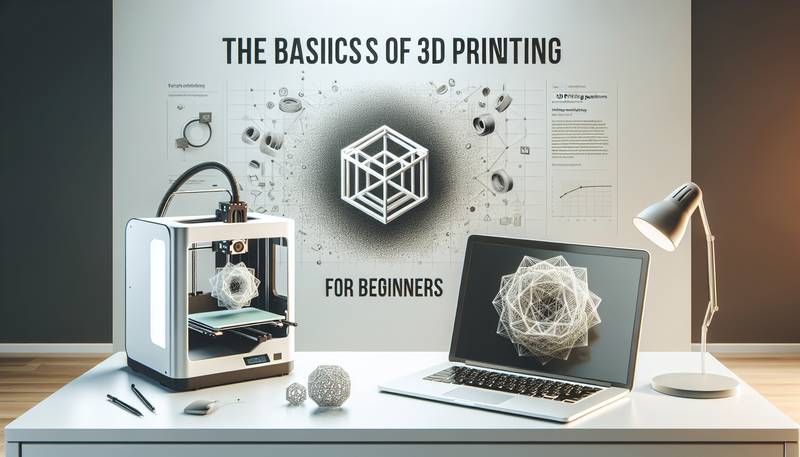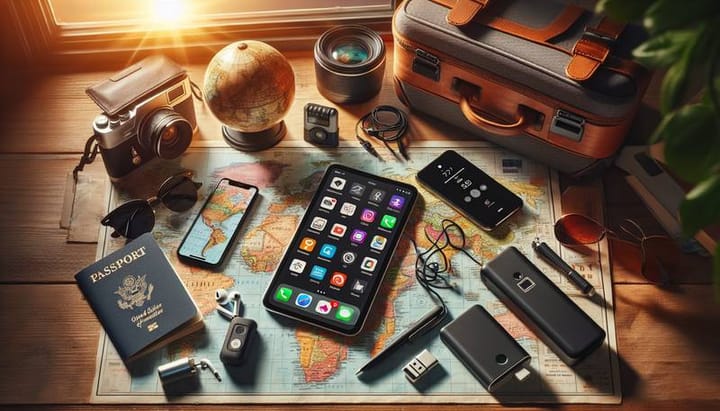The Basics of 3D Printing for Beginners

Introduction
Once a far-fetched idea resembling something out of a sci-fi film, 3D printing has burst onto the mainstream scene, providing a palette for creators, inventors, and everyday individuals to manifest their imagination into tangible reality. If you've ever dreamed of bringing your own designs to life or are just intrigued by the concept of 3D printing, you've come to the right place. This guide will walk you through the essentials, covering everything from the printing process to choosing materials and overcoming common issues. We promise to keep it informative, a little bit fun, and completely devoid of overly-technical jargon. So buckle up, and prepare to embark on your 3D printing adventure!
What is 3D Printing?
At its core, 3D printing, also known as additive manufacturing, is the process of creating a physical object from a digital design by adding material layer by layer. This contrasts with traditional manufacturing methods, which typically involve cutting away material to shape an object (think wood carving or metal machining). Think of it as making a loaf of sliced bread but in reverse. Each slice represents a layer of material that is precisely deposited and bonded to create a three-dimensional object. This technology has the potential to shape the future of manufacturing, allowing for the creation of complex designs that would be impossible or impractical to produce with conventional methods. And the best part? The technology has become accessible enough for anyone to get started!
Types of 3D Printers
With a variety of 3D printers on the market, choosing one can feel like picking a favorite ice cream flavor - a tough, yet sweet decision. The most common type of printer, and likely the one you'll encounter as a beginner, is a Fused Deposition Modeling (FDM) printer. This type works by melting a plastic filament and extruding it through a nozzle to build your object layer by layer. They're generally less expensive and user-friendly, making them a perfect starting point for the 3D printing novice.
Another popular type is Stereolithography (SLA), which uses a laser to cure liquid resin into hardened plastic. These printers are capable of producing incredibly detailed prints, but they come with a steeper learning curve and higher price tag. Then there's Selective Laser Sintering (SLS), Digital Light Processing (DLP), and a smorgasbord of other options, each with their unique advantages. Don’t worry; we’ll make choosing your printer as easy as pie (unfortunately, you can’t print pie...yet).
Materials Matter
Material selection is essential in 3D printing, not just for the final look and feel of your print but also for its functionality. The most common material for FDM printers is PLA (Polylactic Acid), a beginner-friendly, biodegradable plastic that comes in a rainbow of colors. If you need something stronger and more heat resistant, there's ABS (Acrylonitrile Butadiene Styrene - yes, it's a mouthful), the stuff LEGO bricks are made of. And let's not forget about exotic filaments that can mimic wood, metal, and even glow in the dark! As for SLA printers, resin is the go-to, which can be a bit messier and require more post-processing, but the results can be spectacularly detailed.
And beyond the world of plastic, advances in 3D printing have enabled printing with materials such as metal, ceramic, and even living cells. The possibilities are vast, and selecting the right materials means considering factors like the structural strength you need, the flexibility, the level of detail, and of course, how much you're willing to spend. Through this guide, we'll keep you informed and make material selection a breeze.
The Design Process
Before the magic of printing begins, you need a design. And no, you don't have to be da Vinci to design for 3D printing. Thanks to a plethora of 3D modeling software available, you can create your own designs or modify existing ones. Software like Tinkercad is designed for beginners, offering an intuitive interface and plenty of tutorials to get you started. If you're looking to flex your artistic muscles, more advanced options like Blender or Fusion 360 may be your cup of tea.
Then there's the wealth of designs already available online on platforms like Thingiverse or MyMiniFactory, where you can download and print everything from phone stands to dragon sculptures, all for free. And if you're wondering about the nitty-gritty of design, such as tolerances, support structures, and slicing (yes, there's more slicing involved), we'll be covering that too. By the end, you'll be ready to transform your virtual designs into physical masterpieces.
Printing Like a Pro
Once you have your design and material, it's time for the main event – printing your creation. It may seem intimidating, but fear not! We'll walk you through the process step by step. An FDM printer starts with a spool of filament; think of it as the ink for your 3D printer. This filament is fed to a heated nozzle, melts, and is deposited on the build plate where your object will begin to take shape. The key to successful printing is calibration – making sure the build plate is level and the nozzle is at the right height. This ensures each layer of material is applied perfectly, leading to higher quality prints.
For SLA printers, the process involves a tank of resin and a UV laser. The laser solidifies the resin layer by layer to produce exceedingly intricate prints. Regardless of the type of printer, it's crucial to monitor the printing process, especially for those longer prints that can take hours. And don't forget about printer maintenance. Keeping your machine in tip-top shape is paramount for consistent results.
But what happens if you encounter issues like warping or the dreaded spaghetti monster when your print doesn't adhere correctly? Don't worry; we've all been there, and we've got the solutions. By the end of this guide, you'll be handling your 3D printer like a seasoned pro, able to troubleshoot with confidence and mastery.
Making the Most of Your Prints
Printing might be the wow factor, but post-processing is where your project really comes to life. Maybe your print came out a bit rough around the edges, or perhaps you're looking to achieve a glossy finish. Sanding, priming, and painting are all part of the fun, turning your 3D printed object from a simple prototype to a finished product. We'll take a look at the different techniques you can use, from sanding sticks for those hard-to-reach places to the best paint for that high-gloss finish. Have you created an elaborate multi-part design? We'll also show you how to assemble like a boss, covering everything from glue to snap fits.
Beyond aesthetics, we'll delve into practical enhancements. Learn how to strengthen your prints, add functional components, and even make them fit for outdoor use. Post-processing is where your creativity truly shines, and we're here to help with expert tips and tricks that will make your projects stand out.
Common Hurdles and How to Overcome Them
Even with the best setup and prep work, you're bound to hit a few snags along your 3D printing journey. But don't let this discourage you; these hurdles are just stepping stones to mastery. Maybe your prints aren't sticking, or you're getting weak spots in your objects. Perhaps the filament keeps jamming, or there's stringing across your prints. We'll address these issues and more, offering proven strategies to resolve them.
We'll also talk about understanding print settings—like layer height and print speed—and how minor tweaks can significantly impact the quality of your prints. Think of your printer settings as the ingredients in a recipe; we're here to help you find the right proportions for the perfect dish. This section will equip you with the knowledge to move past the common headaches and elevate your 3D printing skills to great heights.
Conclusion
And there you have it—the complete beginner's guide to the exciting universe of 3D printing, where the only limit is your imagination. You've learned about the types of 3D printers, the importance of selecting the right materials, the thrill of designing and bringing your ideas to life, the nuances of the printing process, and the finishing touches that make your creations shine. You're now equipped to tackle challenges head-on and transform your digital dreams into physical realities.
Whether you're printing fun gadgets, bespoke household items, or prototypes for a future invention, 3D printing opens up a new dimension of possibilities. So go forth, be bold, and press 'Print' on your next big idea. We can't wait to see where your 3D printing journey takes you!


